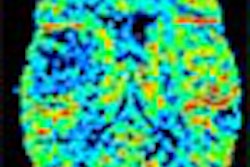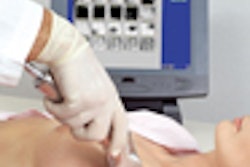Society of Nuclear Medicine, Reston, VA, 2001, $50
This CE publication covers very important and complex subject material. Each of the five subject areas is individually reviewed below.
First, a paper by Daniel Kane, et. al. reviews the revised 10 CFR Part 20 regulations with regard to the 10 CFR Part 35, as they specifically relate to hazards from radionuclides such as I-131 and Xe-133. I offer my compliments to this author, because it is uncommon to find someone who is both knowledgeable about the subject matter, and a lucid writer.
This article is a big help toward understanding the health physics approaches being used in regulatory process and compliance. Correctly, the author notes that the ALI approach in Part 20 differs from the requirement specified (hospitalization) given with Part 35. (Even if not hospitalized, bioassays may be required or advised). Practical importance is given to the use of chlorine bleach (if staff uses it for cleaning, intake could occur).
The justification for how and when to combine dose from internal and external sources is discussed. One test question for this section has a typo:10 CFR 35, not Part 20, specifies hospitalization as a criteria for bioassay. Another question is a bit unclear: Does the dilution with water apply during the administration or during the clean up? Does it assume liquid I-131 administration?
The section on declared pregnancy (also by Kane, and also very well written) gives a pertinent summary of the risk of exposure, pointing out the special concerns of radiation exposure to the unborn. Practical information is provided, such as the finding of the US Supreme Court regarding the rights of the mother to continue working. This is commonly an issue for the declared pregnant worker as well as the supervisory staff. It may not be legal to require someone to be re-assigned because they declare pregnancy.
Also, good advice on the wearing a leaded apron to reduce exposure during pregnancy is provided. The questions on this section are also quite good, however, I might point out one question might lead one to erroneously conclude that an exposure of a declared pregnant individual to 60 mrem might be reportable to the Nuclear Regulatory Commission.
The third article by Kane deals with the Environmental Protection Agency’s Clean Air Act (CAA) and its impact upon nuclear medicine. The U.S. Nuclear Regulatory Commission's traditional lead in regulating safety with radionuclides has seen a complicated evolution with regard to the CAA. The current status is such that most users are capable of showing their exemption. The CE questions for this section are quite appropriate and helpful.
The fourth article, by Brown and Vasillo, is a good summary of practical issues in radiation safety for PET imaging. Since the majority of PET imaging is with 18FDG, it would have been helpful to focus more on this radionuclide. Nevertheless, the questions are good, and I especially like the example given for assessment of the environs near the scanner.
Finally, an article by Bloe, et.al. addresses bid specification on gamma cameras. Given the date of publication (1996), it is understandable that the DICOM issue is not dealt with. For that matter, networking, archiving, database management of image files, teleradiology of emergency nuclear cardiology cases were just arriving on the scene.
However, the importance of clinical application software appears to have been understated. How many seconds are needed for reconstructing and displaying a gated SPECT image set? In a busy department, this may be a key productivity measure. Also understated is the need to get agreement on the specification of the performance prior to issuing a purchase order. Yet the questions posed for this section are quite good, and the author points out the need to do this work ‘up front’. Most departments keep their cameras for a long period of time.
These articles are well written and well chosen for content. This SpeedyCE collection will and should stay on every nuclear department bookshelf or list of favorites.
By William Pavlicek, Ph.DAuntMinnie.com contributing writer
William Pavlicek, Ph.D., is the staff diagnostic physicist and radiation safety officer, department of radiology, at the Mayo Clinic Scottsdale in Arizona. He has been an instructor in nuclear medicine technology.
If you are interested in reviewing a book, let us know at [email protected].
The opinions expressed in this review are those of the author, and do not necessarily reflect the views of AuntMinnie.com.
Copyright © 2001 AuntMinnie.com



















